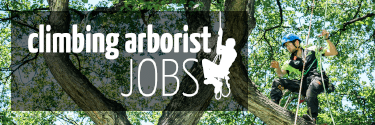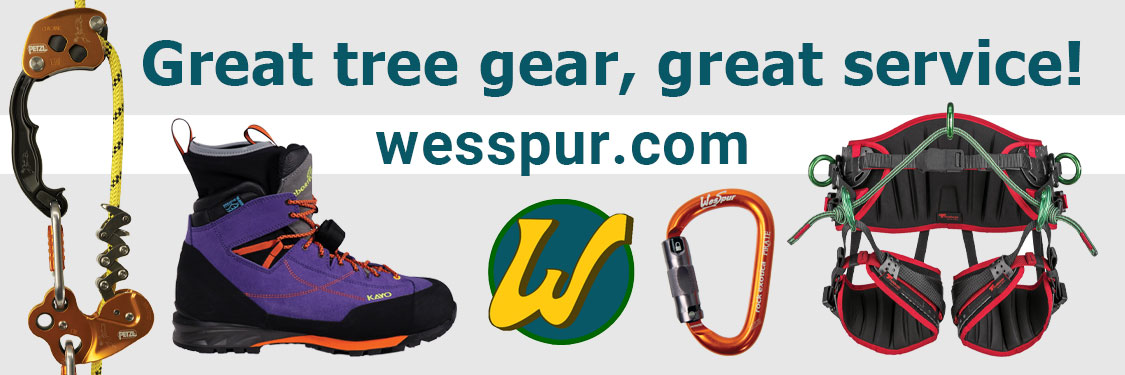Click the images to play videos on the different methods of safely rigging down branches and trunk sections of trees, which sets apart the 'Arborist' from those with no knowledge of the Arboricultural industry.
Fishing pole rigging technique and how angles and friction affect forces
Description
This is a fantastic visual demonstration of rigging from a leaning stem. It shows the difference between rigging traditionally from the tip of the stem, how the force changes by altering the angles of the rigging line. We then setup a full fishing pole rigging setup, and finally show the rigging pole setup with added friction. With each setup you can easily see the difference these setups have on the tree and how much it bends over.
00:00:00 - Intro
00:01:51 - Rigging straight down from tip of the stem
00:04:07 - Change ropw direction to the base of the tree
00:05:47 - Fishing pole rigging setup using pulleys
00:09:03 - Fishing pole rigging setup using carabiners to add friction
00:12:23 - Final thoughts
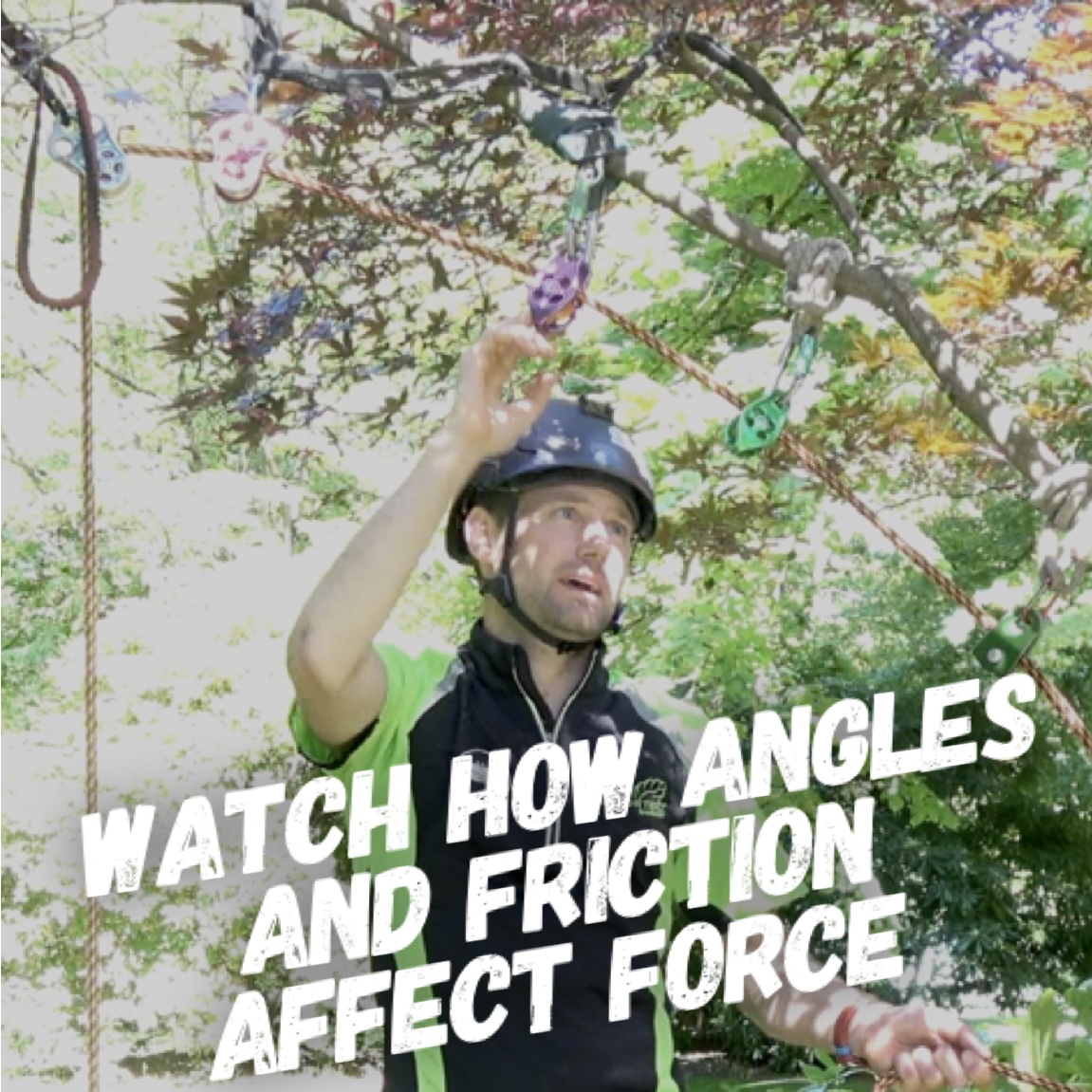
Petzl Spin L1D is not your average pulley
Description
We have been using this pulley for One year at this point. This pulley is a little different from most, so we explain the specs, how it works, how and why it adds friction, and when it might be a great option to choose this over some of your others for certain jobs.
We love this pulley and think it is a great addition to every light rigging setup.
If you climb on a moving rope system (MRS) then you might also like this pulley for your tie in point as it makes pulling up easy, but makes holding your body weight easier.
00:00:00 - Intro
00:00:56 - Overview
00:02:07 - Pulley features/specs and how it works
00:07:18 - Other uses
00:08:15 - Climbing on the Spin L1D

How to set up False Crotch rigging system and why…
Description
You sometimes come across a tree that you have to remove that requires rigging, but the rigging point isn’t ideal for the drop zone. We demonstrate a viable option for moving the rigging point to a more ideal location. Maybe there is an object that can’t be moved like a shed, greenhouse or swimming pool Maybe there is a steep gradient at the base of the tree that flattens out 7or 8 feet away and using this system would mean there is no need to keep scrambling up the bank. This technique is just one of many that can be added to your mental toolbox to provide more options for those tricky jobs.
Use ChipDrop to find a place for your next load of wood chip https://getchipdrop.com/?ref=climbing
Subscribe to the ClimbingArborist channel and hit the notification bell to receive updates of new content: https://www.youtube.com/climbingarborist1
Video filmed and edited by InTree Media: bit.ly/InTreeWebsite
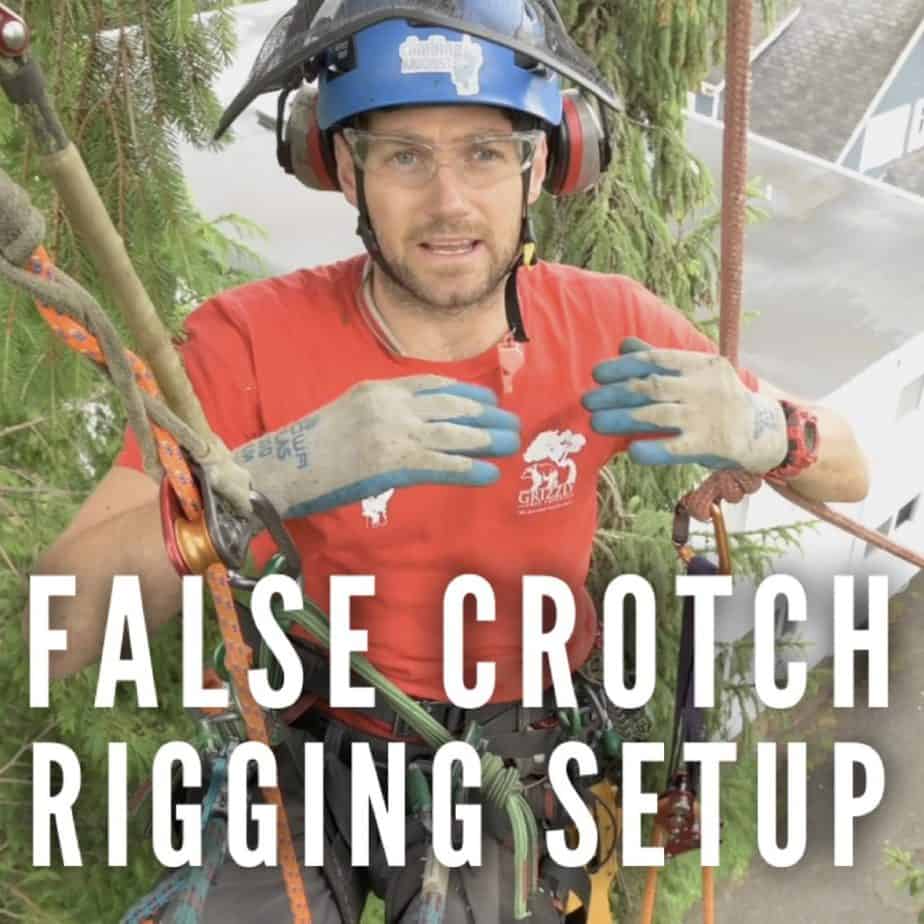
Controlled Slide line Rigging System
In this video we explain from start to finish how to put together and execute a well organized, controlled slide line setup. The slide line system doesn't come in to use that often but in the right situation it can save a lot of leg work and man power. The slide line system can also be adapted to create a horizontal slide line for specific situations, with the use of a few extra components.
Filming credit:
Joel Spooner - joelspooner.com
Climber: Mat Fernandez
Groundsman:
George Keays / Dan Holliday
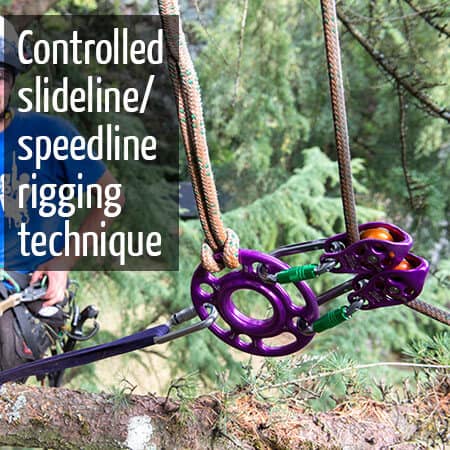
SafeBloc Friction testing
SafeBloc Friction testing
We have been using the SafeBloc a bit here and there, and the first thing you need to get used to, is how much less friction you need to add at the base of the tree, even when rigging large wood. So we were interested to see just how big of a log could we rig down with the friction of the SafeBloc slowly lowering the log down to the ground with no grounds person.
And here is our testing...
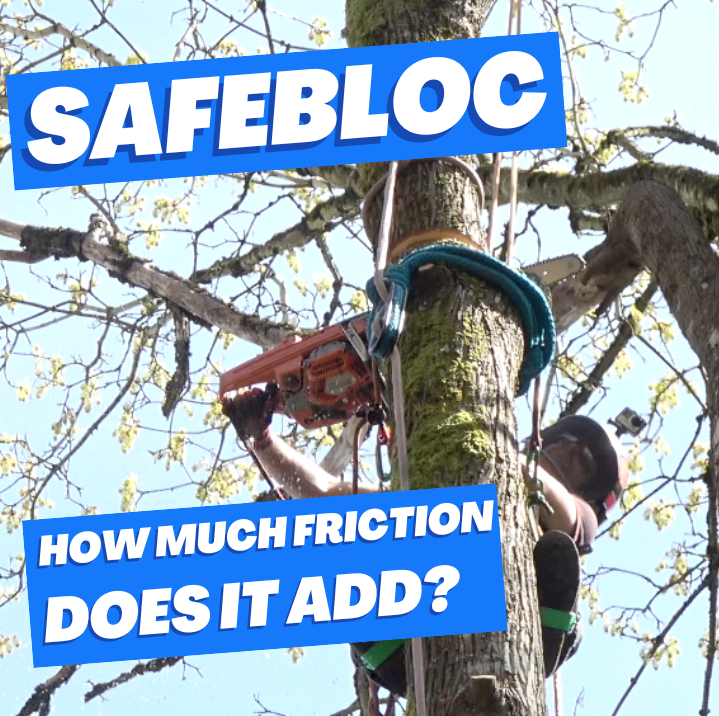
Negative rigging basics
Negative rigging basics
We explain the techniques used to rig down a spar pole. Covering best methods and safe protocols to use. We offer up some examples of bad technique, or less efficient ones. Negative rigging (or square rigging) is very fatiguing and hard on the climber's body. If you remove trees often, this should be a technique you really want to master. If you find this video useful or know someone that would, please share it with them.
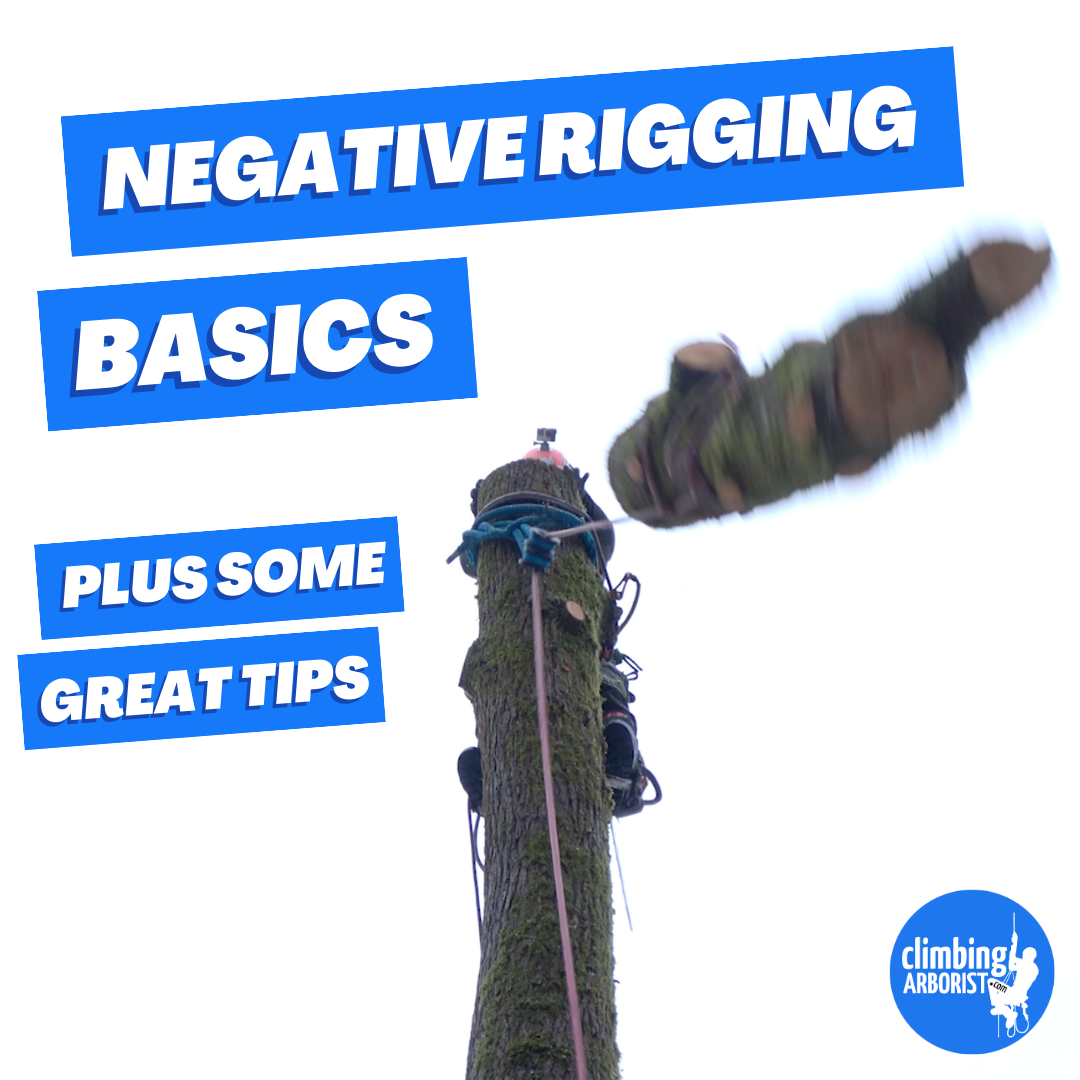
Climber falls from a tree after taking the top out
Climber falls from tree after taking the top out
We breakdown this video of a tree climber taking a large top, and then being thrown off his spurs and spiralling down the trunk and landing before the butt of the top section hits the ground. How and why did this happen? What mistakes were made by the climber? What mistakes were made by the ground crew? What equipment could have prevented this? What techniques could have prevented this?
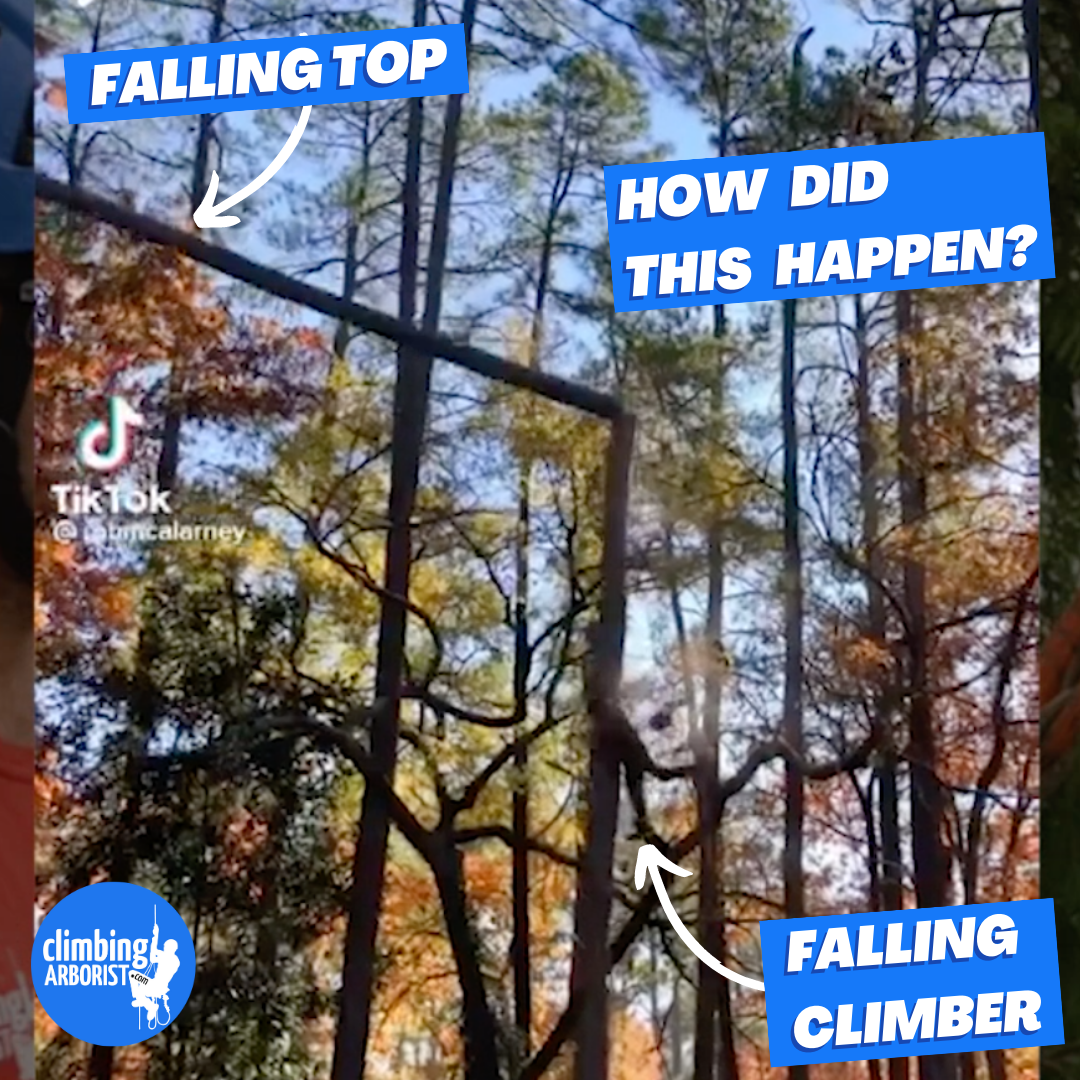
SPEEDLINE 3 different techniques to make tree work easier
SPEEDLINE 3 different techniques to make tree work easier
Dan offers three options where a speedline can be used, but using three different techniques. Speedlines are an amazing technique for rigging, and they have more uses than you might think. Combining gravity will guidance along a specific route can save lots of leg work, and it's frickin fun!! Adding these skills to your arsenal of tree work techniques will open up new ways of doing specific jobs.
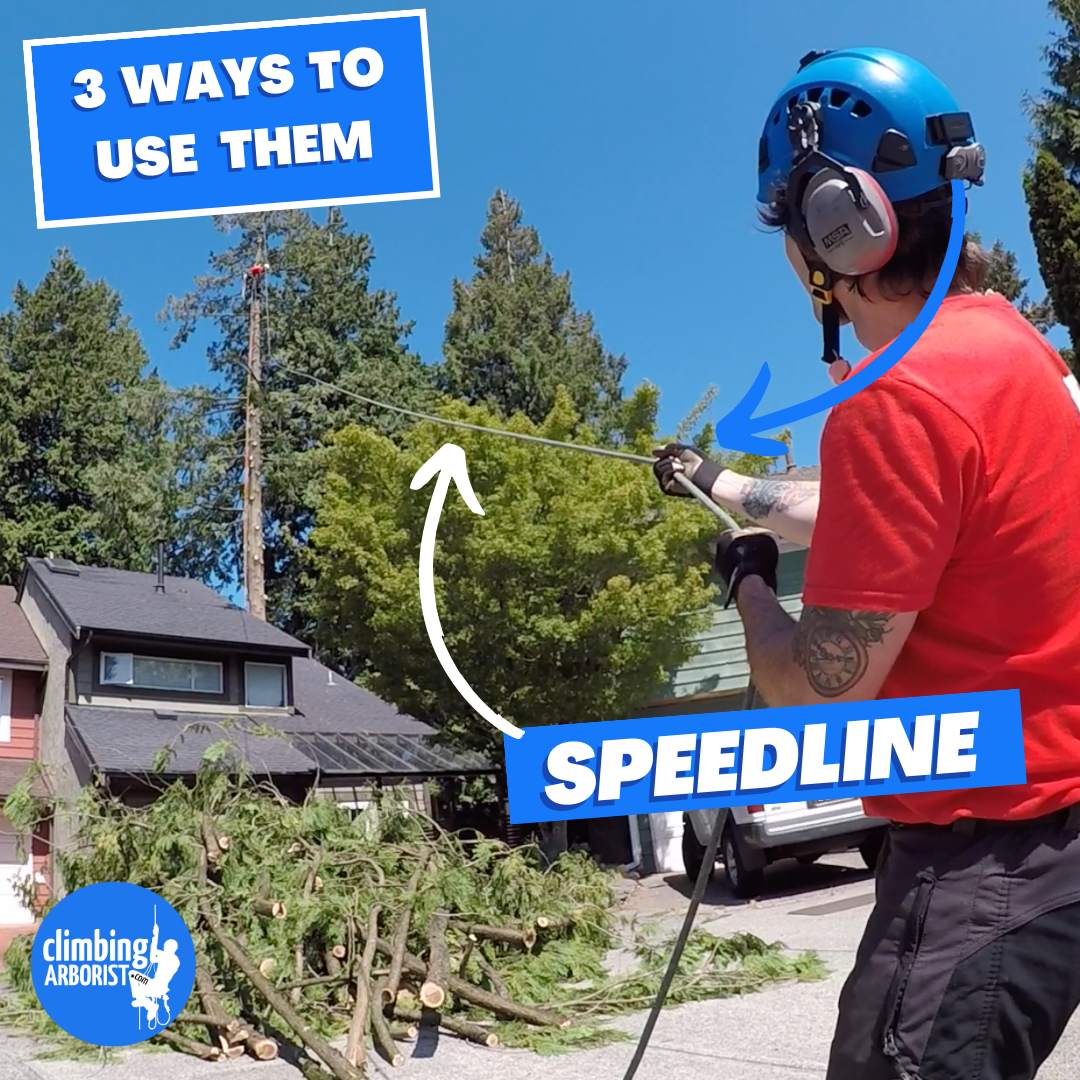
Rigging: Tip tying
Description:
The rigging block is set high in the tree at a point above a designated drop zone. The webbing strap or rope is then attached as far out near the tip of the branch as possible. This can be done for a few reasons, it can help to swing the limb round laterally while still hinged at the butt end (to avoid objects below). Another reason is to rig a more upright section to the ground butt end first. Sections can also be raised while still hinged using this method
Additional info:
This method is most productive when a webbing strap/loop runner is used with a steel carabiner.
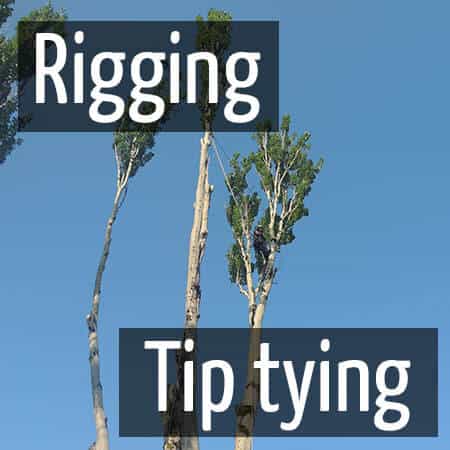
Big stem, large split, hazard mitigation treework
Big stem, large split, hazard mitigation treework
This job is a large, mature Black Locust tree with a nasty split on a very large stem overhanging a coachhouse. This stem also contains other smaller unions with concerning separations. The guys take on some hazard mitigation work to remove this potentially dangerous stem. Dan takes this opportunity to train Conor and Tom on some good rigging practices, using multiple rigging points to create safer systems (explained in the video) and more…
The guys then debrief on the job at the end of the day.
Subscribe to the ClimbingArborist channel: https://www.youtube.com/climbingarborist
Facebook - https://www.facebook.com/ClimbingArborist/
Instagram - https://www.instagram.com/climbingarborist_com/
Podcast - https://www.climbingarborist.com/podcast/
Subscribe to our podcast on iTunes, Sitcher, Spotify, Googleplay and more….
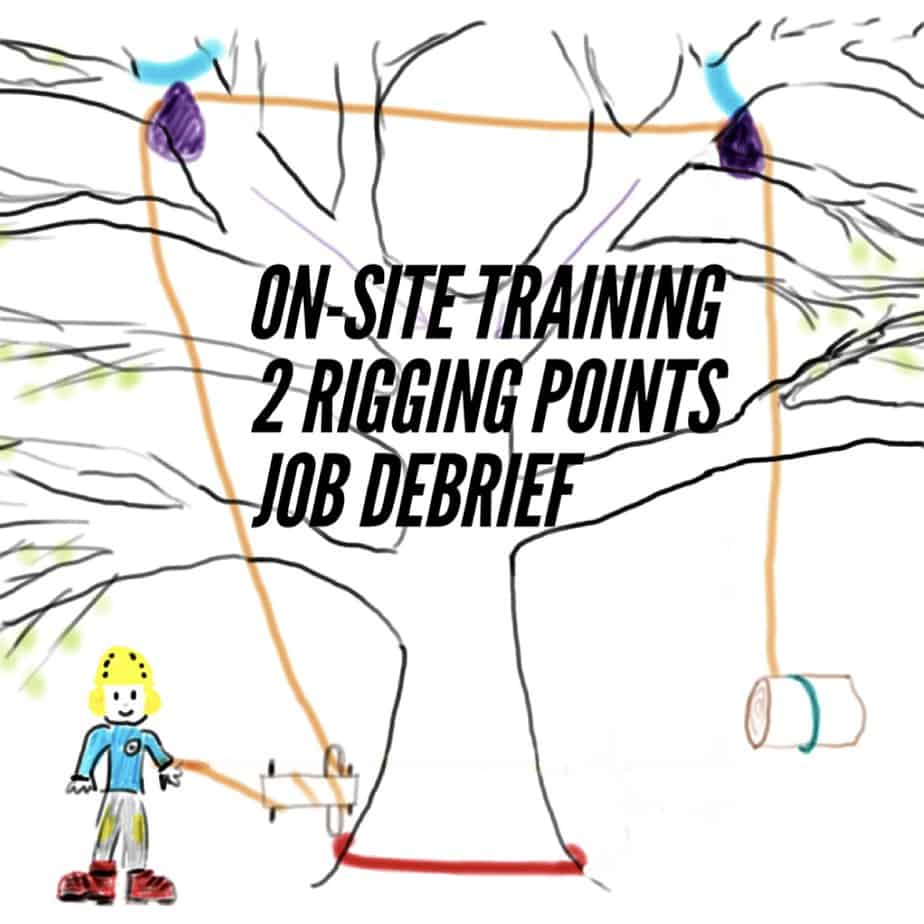
Avoid getting pinned by a branch or log - Rigging techniques for Arborists
Description
Have you ever had a branch or log fall into you when rigging? This could help avoid that from happening again...
Dan talks Conor through a simple but very useful rigging technique to avoid the branch or log coming across the front of him and pinning against his lanyard, harness or his person.
This technique is all about looking at how the branch will fall once you have made the cut, and how to manipulate the rigging line to get the piece to fall the way you want it to go.
If there is no stub to hook the rigging line behind, you can make a cut/groove in the wood with your chainsaw.
Subscribe to the ClimbingArborist channel and hit the notification bell to receive updates of new content: https://www.youtube.com/climbingarborist1
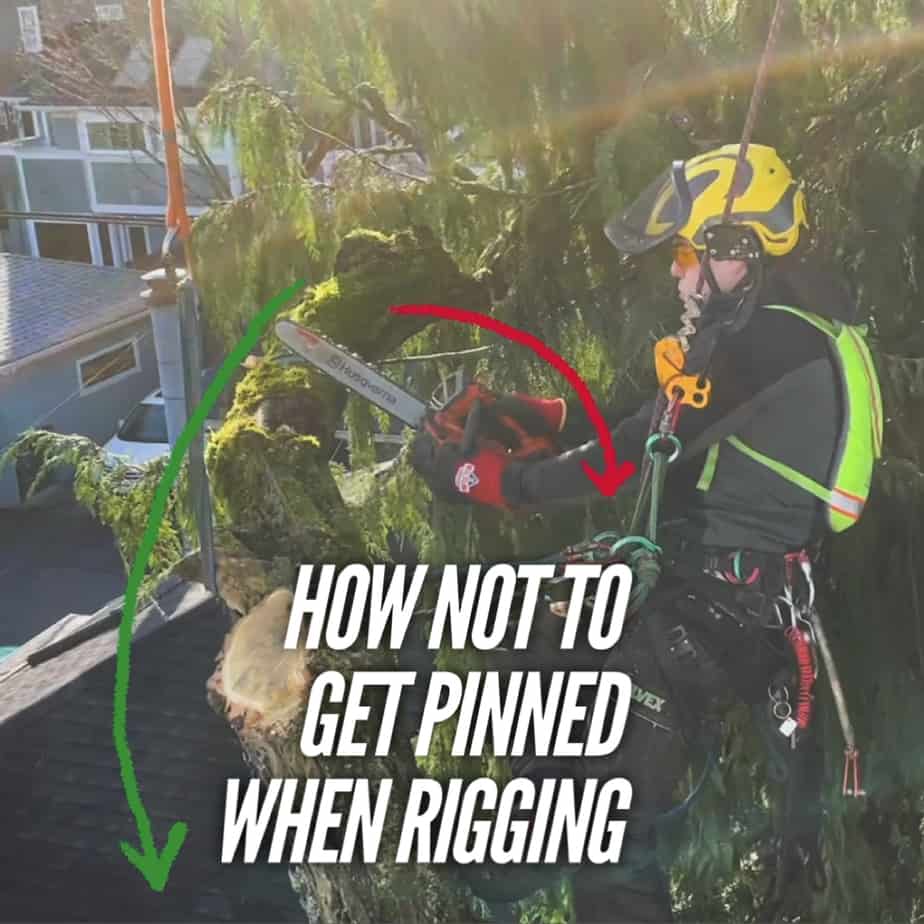
Rigging using a spider leg
Uses:
Spider leg is used to rig down limbs while keeping them in a horizontal position.
It is a great technique when rigging large low limbs with objects/buildings within close proximity.
Can be used in conduction with a speed line.
Additional information: The spider leg sling must be a smaller diameter rope than the rigging line.
This is an amazing rigging technique that all arborists should know as part of their skill set, it will come in very useful.
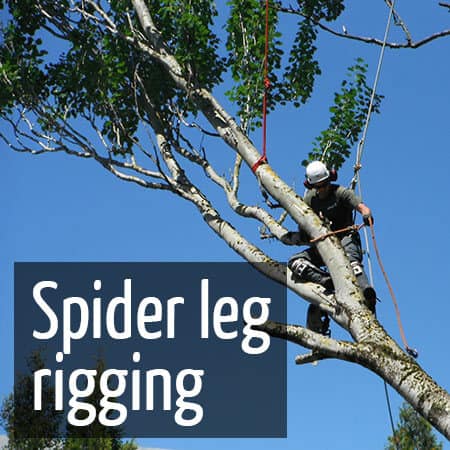
Rigging: Butt tying
Description:
The rigging block is set high in the tree at a point above a designated drop zone. Then the webbing strap or rope is attached a couple of feet out from the butt end of the branch, a notch and back cut or step cut is then made near the branch union and the branch will be lowered down tips first.This is the simplest form of rigging, but if done correctly using the right equipment, is very fast and productive.
Additional info:
This method is most productive when a webbing strap/loop runner is used with a steel carabiner.
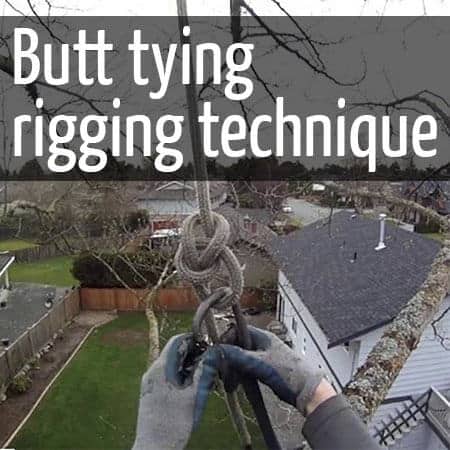
Rigging using a spider leg
Marlin spike for use while rigging
A little trick of using the Marlin spike while rigging to prevent the line passing through the pulley, and also to remove the weight of a heavy rigging line when rigging a stem.
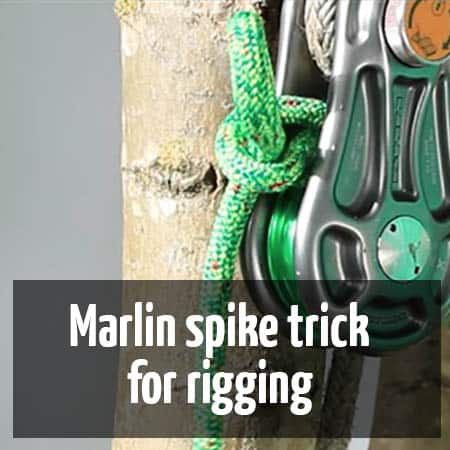
Using multiple rigging points
Using multiple rigging points
This is a demonstation of how using multiple rigging points changes foces and load. If understood well, you can work with the stucture of a tree that has multiple stems to create a really strong rigging system.
This method has a time and place and should only be used if you have an understanding of how each stem or branch will be loaded, and where the stem would be strongest and weakest.
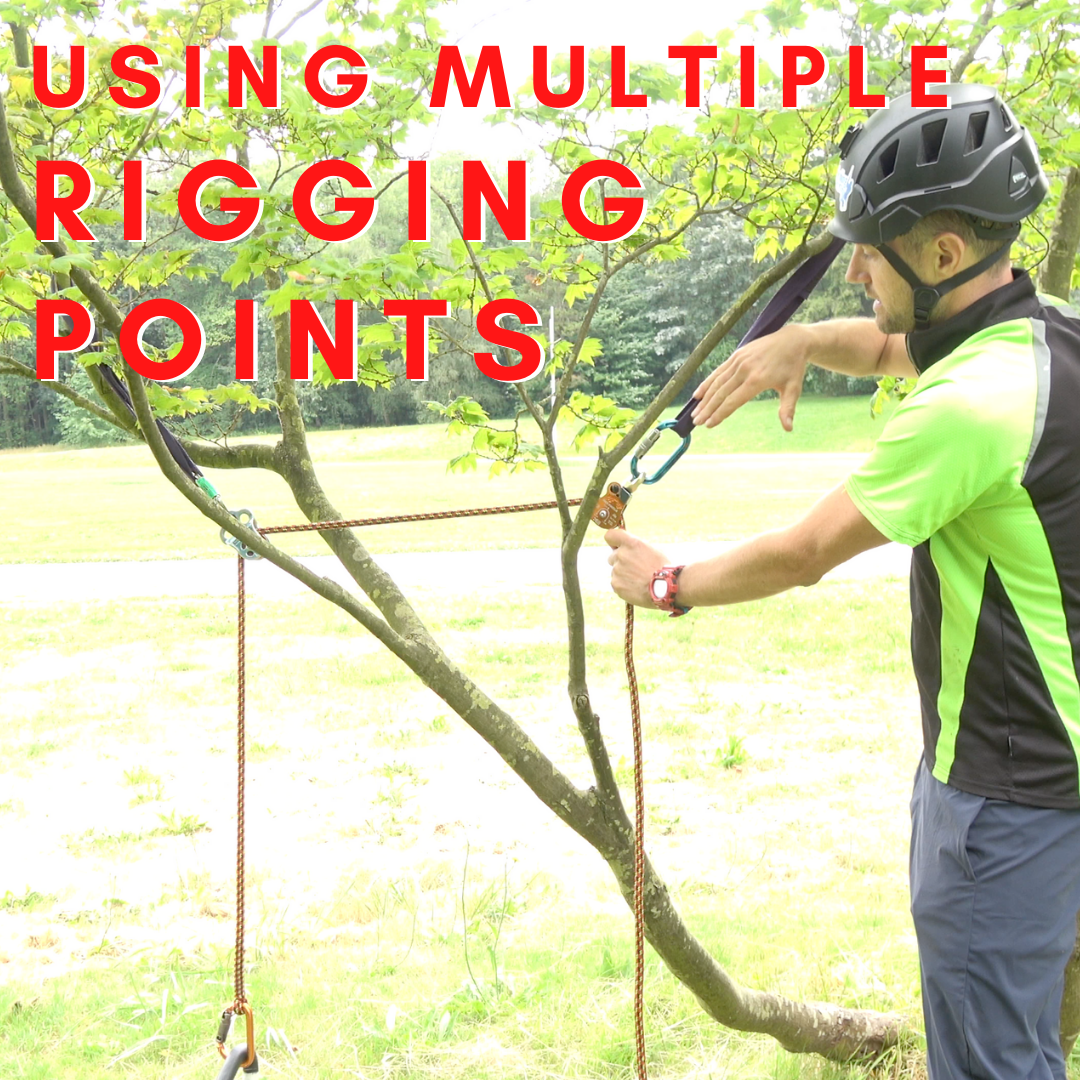
Visualize the rig
Visualize the rig
Rigging is fantastic and helps us do jobs in tight quarters, but when you introduce rigging you introduce more risk. Dan gives some tips learned from years of experience that can help to avoid injury when rigging, also help the rigging flow efficiently. Also Dan touches on ‘Cycles to failure’ for rigging equipment.
00:00:00 Intro
00:01:42 Visualize the rig
00:18:03 Cycles to failure
00:23:48 Example of understanding how a rig will go and how to set the sling accordingly.
If you know someone you would like, or benefit from this video, share it with them…
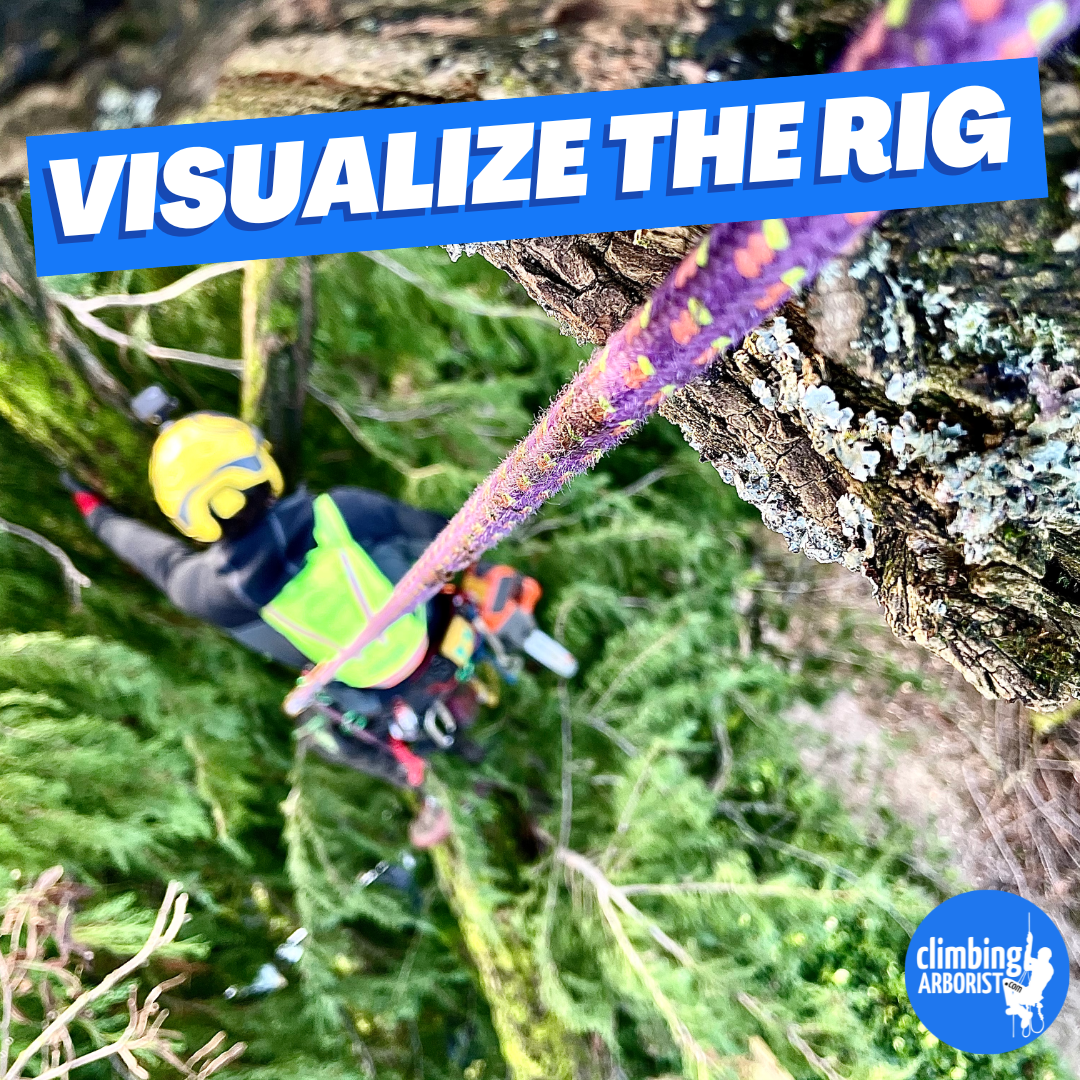
Cow hitch
This is a simple and easy to follow demonstration on how to tie the Cow hitch for arborist rigging operations. It is the knot most recommended (by manufacturers of rigging equipment) for the attachment of friction devices and large pulley blocks.
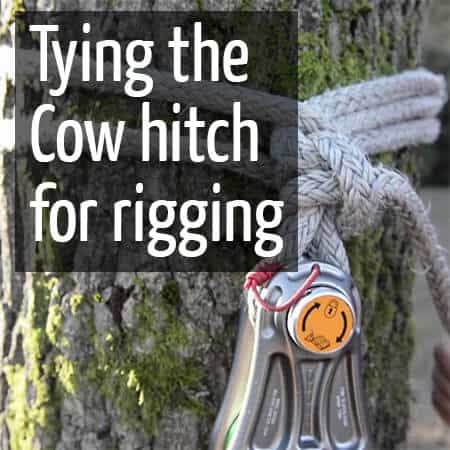
Rigging: Butt hitching
Description:
This method of rigging is used once all branches have been removed and only the trunk remains. The rigging block is then attached to the trunk just below the section to be removed. A notch is made on the same side as the block. Then the rigging rope is attached, and finally the back cut can be made once the ground staff are ready to rig the section.
Additional info:
When attaching the pulley block, it must be kept tight to the trunk to minimize the freefall which results in snatching. The harshness of the snatch can be reduce by the ground staff allowing the rigging rope to run and then slowing it down in a controlled manner.
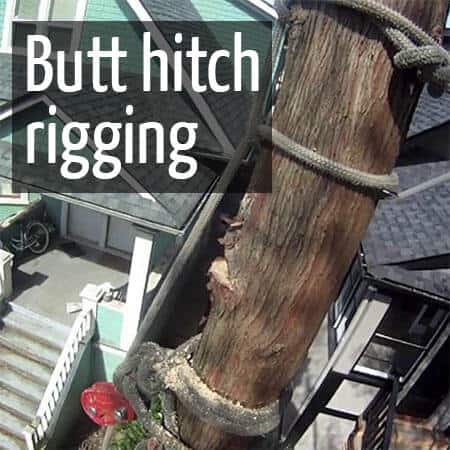
Arborist protecting surfaces when dropping logs
Description
Dan from ClimbingArborist gives a great tip on how to piece down a stem and avoid doing damage to a lawn, patio, driveway etc... without rigging each section down. This is just another trick to have up those long arborist sleeves for when that certain job comes along that makes this the best and most efficient method possible.
Use ChipDrop to find a place for your next load of wood chip https://getchipdrop.com/?ref=climbing
Subscribe to the ClimbingArborist channel and hit the notification bell:
https://www.youtube.com/climbingarborist1
Video filmed and edited by InTree Media: bit.ly/InTreeWebsite
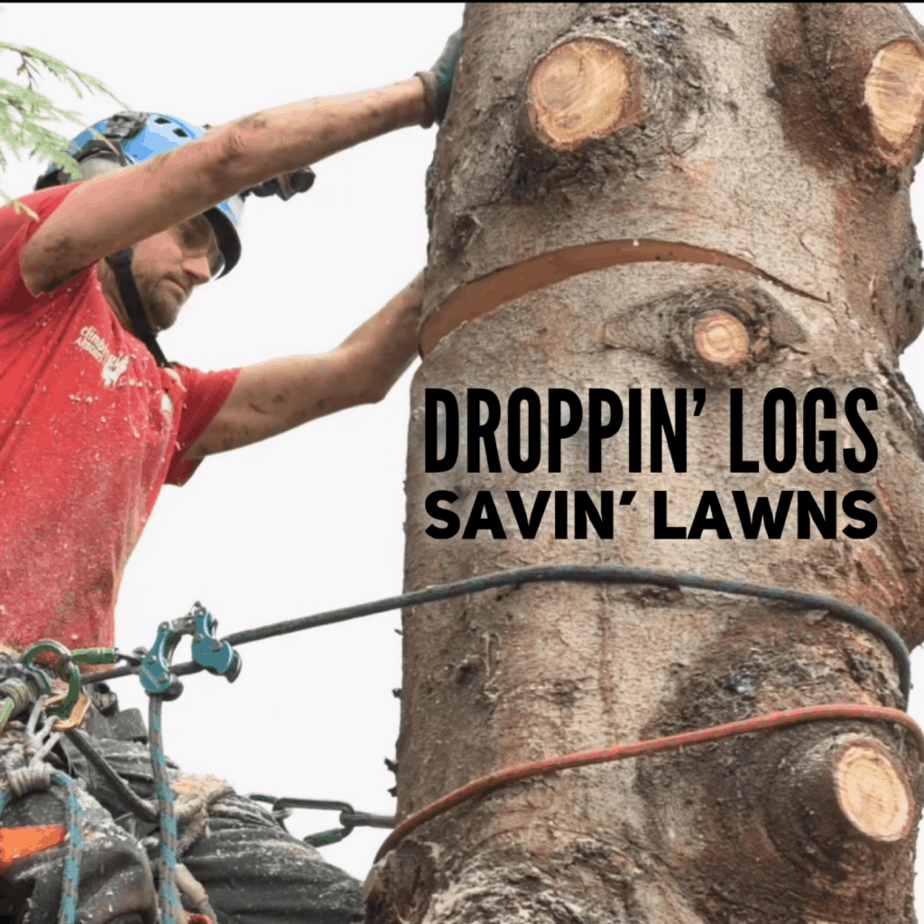
Double Block Rigging
Double block rigging
I have been witness only once to the failure of rigging equipment when a colleague was removing a large London Plane tree about 8 years ago. London Plane is very dense and heavy wood. The tree had been pollarded multiple times over the years at the same point. When it came to rigging this piece out, he continued to tie up the chuck in a conventional negative rigging system around the whole of the pollard point. If a quick calculation had been done we would have known that once rigging off, the force this piece would generate would by far exceed some of the rigging component’s breaking strength. The inevitable happened and the rigging line snapped at the point where the knot had been tied. Luckily none of the crew where injured but a retaining wall and part of the driveway were damaged and this was a luxury property in St. Johns wood, London..
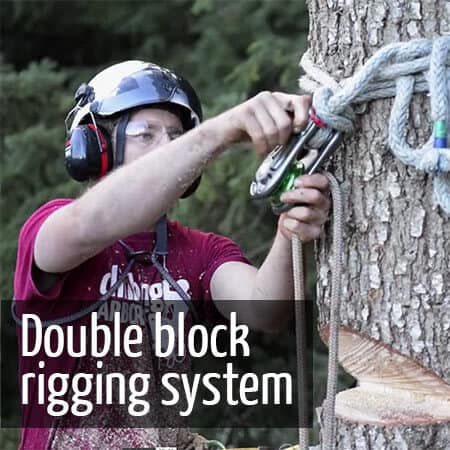
Rigging from another tree? How can I get the rigging line back?
Rigging from another tree? How can I get the rigging line back?
The best rigging point is not always in the same tree as you are working, this can be for many reasons, and get the rigging line back to the climber is almost impossible. The same goes for a tight work space, or overgrown understory, these things also make getting the rigging line to the climber hard work. This specific job site is a perfect example of 2 climbers, removing 2 different tres, using the same rigging line located in a third tree. We use a simple but extremely effective techniuques to retreive the rigging rope. Climbers - Dan Holliday & Sam Muskus Ground crew - Tim Parent
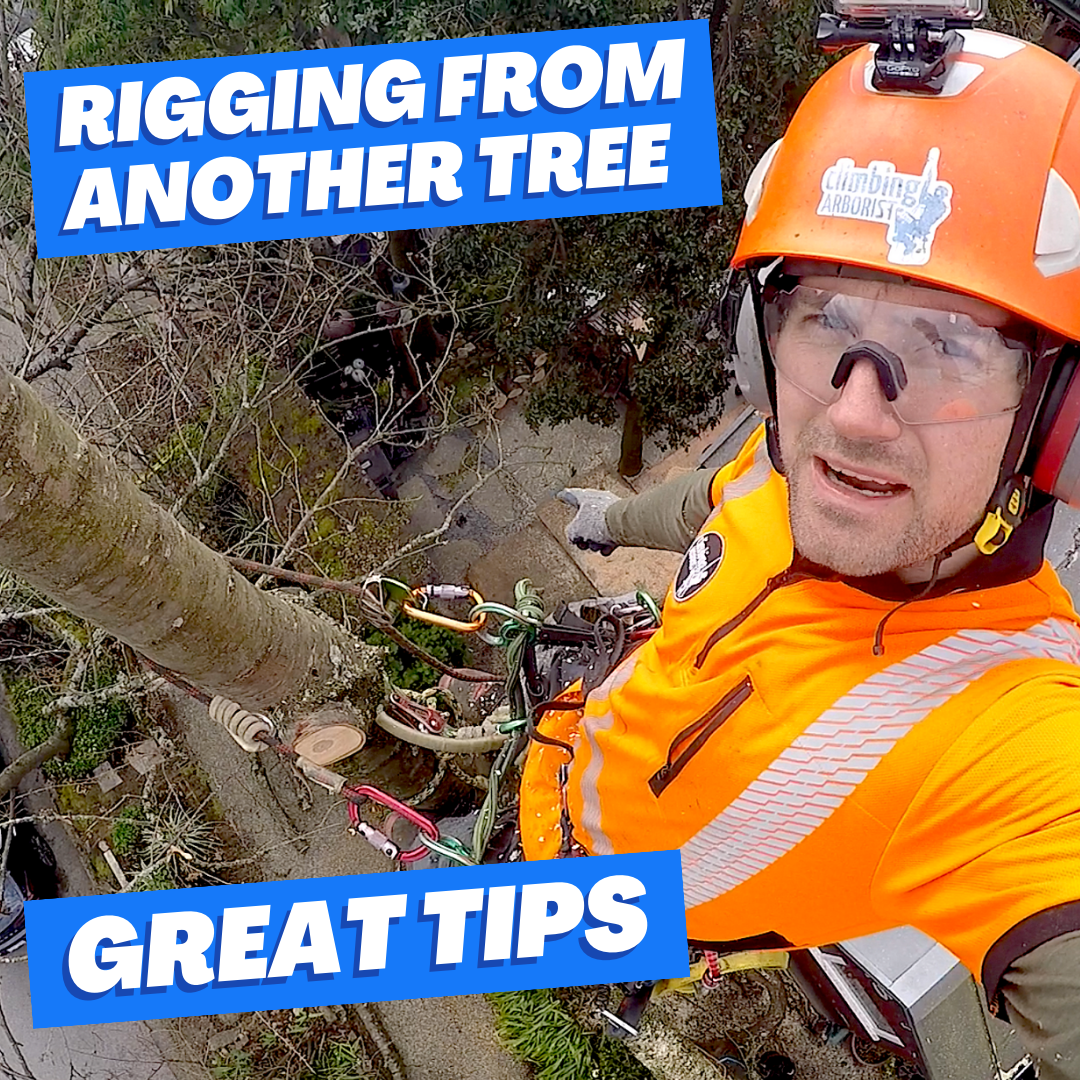
Tree worker makes huge mistake cutting a log he is attached to - CLIMBING ARBORIST BREAKDOWN
Tree worker makes huge mistake cutting a log he is attached to - CLIMBING ARBORIST BREAKDOWN
We breakdown a terrible incident of a professional climbing arborist as he makes a face cut, then makes his back cut while still tied into the log he is removing.
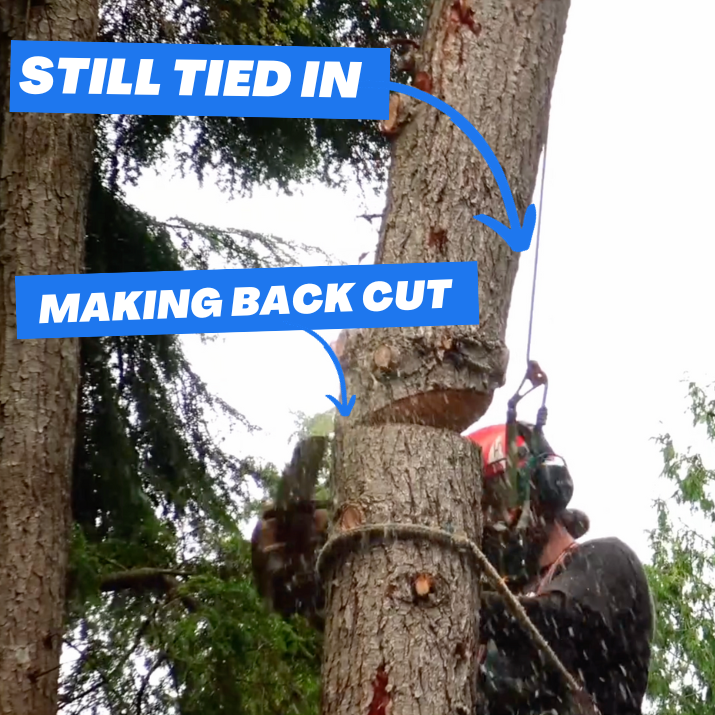
Fishing pole rigging technique demo
Fishing pole rigging technique demo
This is a fantastic visual demonstration of rigging from a leaning stem. It shows the difference between rigging traditionally from the tip of the stem, how the force changes by altering the angles of the rigging line. We then setup a full fishing pole rigging setup, and finally show the rigging pole setup with added friction. With each setup you can easily see the difference these setups have on the tree and how much it bends over.
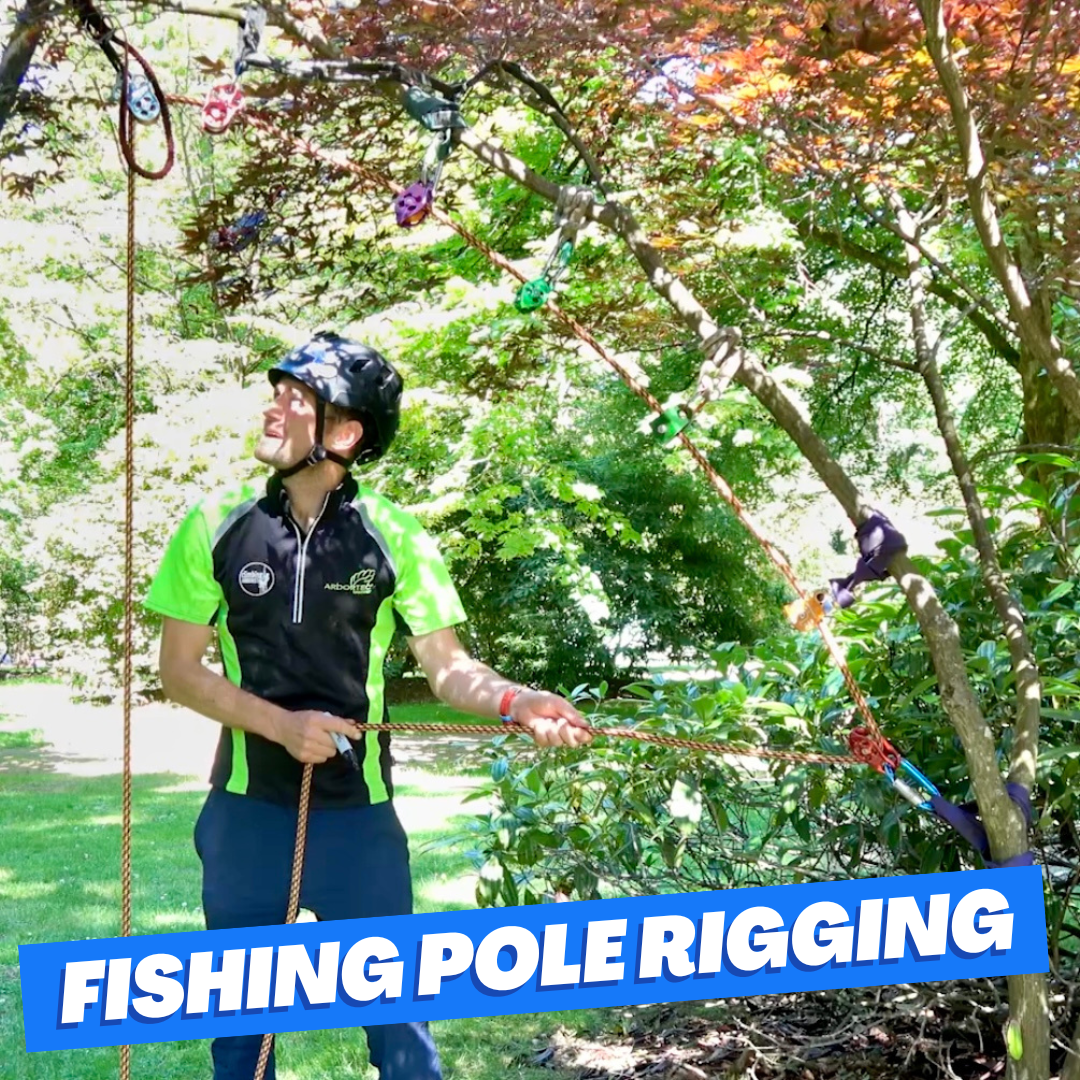
SPEEDLINE 3 different techniques to make tree work easier
SPEEDLINE 3 different techniques to make tree work easier
Dan offers three options where a speedline can be used, but using three different techniques. Speedlines are an amazing technique for rigging, and they have more uses than you might think. Combining gravity will guidance along a specific route can save lots of leg work, and it's frickin fun!! Adding these skills to your arsenal of tree work techniques will open up new ways of doing specific jobs.



